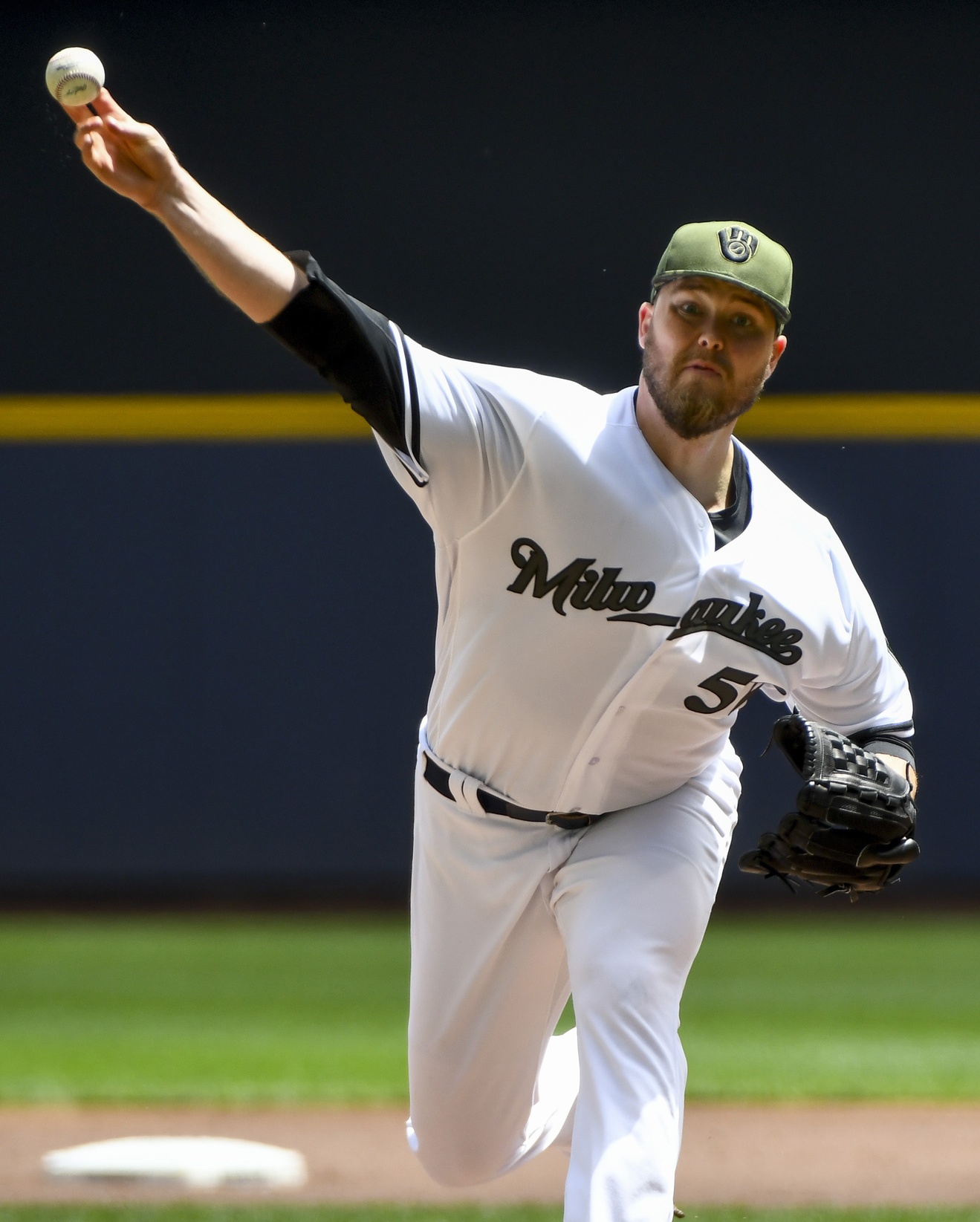With the holiday weekend, I’m going to skip the usual focus of the Weekend Recap of one series to expand our universe to include Monday’s game against the Mets.
After another hitless game on Monday, Eric Thames has now gone nineteen at bats without a hit, drawing only three walks during that span. Everyone knew that Thames’ rampage through April couldn’t last because eventually pitches would adjust, and it’s worth taking a look at the past few games to see if there are changes in approach underlying this string.
Pitchers have begun to pitch Thames differently. According to Brooks Baseball, only half the pitches he’s seen have been hard, compared with 59.95 percent hard pitch rate for the full season. Correspondingly, he’s also seeing fewer first pitch fastballs. For the whole season, pitchers were starting Thames off with fastballs. Both lefties and rights were tossing four seamers and sinkers at least 60 percent of the first pitch in an at bat. However, now pitchers are feeding him a steady diet of sliders and curves to start his at bats.
During this slump, Thames has struck out eight times in the nineteen at bats, well above his season rate of 23.4 percent. Two things noticeable about the recent streak: Thames is swinging more, and he’s whiffing more. His swing percentage is up against all types of pitches compared to his season totals to date, including offering at almost two thirds of the offspeed pitches he’s seen during the streak. With those swings, have come many misses, as this whiff percentage table shows:
| Hard | Breaking | Offspeed | |
| 2017 Season | 10.06% | 16.24% | 18.26% |
| Post 5/23 | 15.38% | 16.00% | 35.71% |
We’re dealing with such a small sample size here, but with no noticeable increase in groundball or pop up rates, it just looks like Thames is getting fooled at the moment. His timing may be off as he’s dealt with some nagging injuries over the last few weeks. Until it returns, pitchers are going to keep punishing him with non-fastballs.
On Sunday, Jimmy Nelson had his finest start of the season, pitching seven innings and striking out ten while allowing one run on seven hits and no walks. The ten strikeouts were a season high, and his fifteen swinging strikes tied his season high. Notably, Nelson leaned heavily on his curveball, throwing it twenty-three times, the second most this season. The curveball has been an important pitch for Nelson because batters can’t really hit it. The whiff percentage on the pitch is only 11.02 percent, which is in line in with the rest of his pitches. However, when batters do make contact, they don’t do anything with the pitch. The batting average against is only .100, and the slugging percentage is .200.
Nelson may make sense as another guy who would be better off leaning on his curveball in the style of Rich Hill and using more as a primary pitch, because his four seam fastball is getting killed to the tune of .512 slugging percentage against. Because he throws the pitch so much, it’s a large factor in his disappointing 4.35 DRA this season.
Some of his results are luck: most of Nelson’s batted ball data are in line with his career numbers, and he’s cut down his walks while increasing his strikeouts. This should align with a breakout. Unfortunately, he’s gotten unlucky in a two key areas which may be preventing him from taking a step forward: first, he’s only induced one infield fly ball this season. In his three seasons at the highest level, his infield fly percentage has risen from 9.9 percent to 12.2 percent, yet this season he’s down to 1.8 percent. The league rate of infield fly balls is 9.5 percent, and that number combined with his past results suggests some unluckiness is afoot in this area.
The other disappointing number is Nelson’s .333 BABIP. Nelson’s career BAIP is .301 and his PECOTA 50th percentile projection had him at .291 this season. His current BABIP is below his 10th percentile projection. With the league average BABIP at .291, some regression should be coming here. If a few of those hits stop falling in, Nelson’s numbers should take the step forward his underlying numbers indicate is possible.
Nelson’s emergence has taken on a greater importance as the Brewers continue to compete for a playoff spot. The team DRA is currently 4.99, good for 25th in MLB, but the starters have posted a 5.45 DRA, 26th in MLB. The Orioles are the only other team in the bottom 10 in starters’ DRA with a record over .500. While the current formula of home runs and a strong back of the bullpen has been a winning formula for two months, the team needs more from its rotation to stay in contention.
